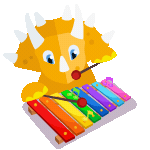Jewish and Israeli Musical Traditions
Music has always played a meaningful role in Jewish life—from ancient religious ceremonies to modern celebrations. Over the centuries, both religious and secular music evolved, reflecting the deep cultural and historical identity of the Jewish people.
Ancient Sounds: Temple and Synagogue Music
In Biblical times, music was part of religious ceremonies in the Jewish Temple and synagogues. There were 12 singers and an orchestra of 12 instruments used during services. One of the most popular instruments from that time was the uggav, an early wind instrument.
Many ancient Jewish poems called piyyuts are still chanted or sung in synagogues today, especially during holidays and Shabbat. Families also sing special Jewish hymns called zemiros at the dinner table during Jewish holidays. These songs help pass down traditions and bring generations together.
Another unique style of singing is called nigun. These are wordless melodies, often sung in groups, where the focus is on feeling and spirituality rather than lyrics. In some traditions, people also sing Baqashot—a collection of prayers and songs sung every Shabbat morning from midnight until dawn.
Music and the Founding of Israel
As the modern state of Israel was being formed, music played a major role in uniting people. The youth, labor, and kibbutz movements helped spread Hebrew songs in everyday life. Sing-alongs, known as shira betzibur, became a popular social activity and remain a beloved tradition in Israel today.
Early immigrants to Israel brought with them melodies from their home countries—Germany, Russia, and other parts of Europe—and wrote new lyrics in Hebrew. These became the first Hebrew folk songs, often shared at public gatherings and community events.
Songs of Hope and Remembrance
During Israel’s many wars, soldiers and civilians expressed their feelings through patriotic folk songs. These songs spoke about friendship, bravery, and the sadness of loss. Today, many of these melodies are played during memorial days and national holidays, helping to remember and honor the past.
If your child is interested in learning more about Hebrew language and culture, Dinolingo offers engaging Hebrew lessons for kids. With videos, songs, games, and printable materials, children can explore Hebrew through joyful musical experiences and build meaningful cultural connections.
Start Learning a New Language Today!
Best Language App for Kids.
7-day free trial. Then only $19/month. Cancel anytime.
